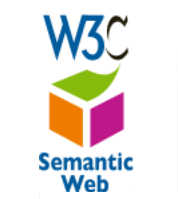| New Ontologies For OWL |
| Written by Kay Ewbank | |||
| Thursday, 07 September 2017 | |||
|
There are two new proposals for changes to OWL, the Web Ontology Language. The new proposals are for an update to the Time ontology and for a Semantic Sensor Network ontology.
OWL is the W3C Web Ontology Language. It's a Semantic Web language that can be used to represent complex information about things, groups of things, and relations between things. OWL is a computational logic-based language, meaning that information expressed in OWL can be used by computer programs for purposes such as verifying whether the information is consistent, or to make implicit knowledge explicit. OWL documents, known as ontologies, can be published in the World Wide Web and may refer to or be referred from other OWL ontologies. Ontologies are the formal way OWL (and other ontologic systems) describe taxonomies. An ontology specifies the structure of the information or knowledge, and has some similarities with a class hierarchy in an object-oriented language. However, an ontology is expected to evolve as the information it represents develops. The two new recommendations for the OWL specification both come from The Spatial Data on the Web Working Group. The first recommendation is for the Time Ontology in OWL specification. This ontology provides a way to describe properties of resources in the world or described in Web pages that relate to time or temporal properties. The ontology provides the means to express facts about durations and date-time information as well as other temporal data. Time positions and durations may be expressed using either the conventional (Gregorian) calendar and clock, or using another temporal reference system such as Unix-time, geologic time, or different calendars. The recommendation proposes relaxing the limitation that time position uses only the Gregorian Calendar. The second proposal is for the definition of the Semantic Sensor Network (SSN) Ontology specification. This specification sets out an ontology for describing sensors and their observations, the involved procedures, the studied features of interest, the samples used to do so, and the observed properties, as well as actuators. Applications such as satellite imagery, large-scale scientific monitoring, industrial and household infrastructures, and the Web of Things can all have data expressed using SSN Ontology. SSN includes a lightweight but self-contained core ontology called SOSA (Sensor, Observation, Sample, and Actuator) for its elementary classes and properties. Comments are invited on both proposals before October 5, 2017. More InformationOWL Time Ontology Recommendation OWL SSN Ontology Recommendation
Related ArticlesDeveloper's Edition Of HTML Makes Comeback HTML5 Is A Finished W3C Standard
To be informed about new articles on I Programmer, sign up for our weekly newsletter, subscribe to the RSS feed and follow us on Twitter, Facebook or Linkedin.
Comments
or email your comment to: comments@i-programmer.info |
|||
| Last Updated ( Thursday, 07 September 2017 ) |


